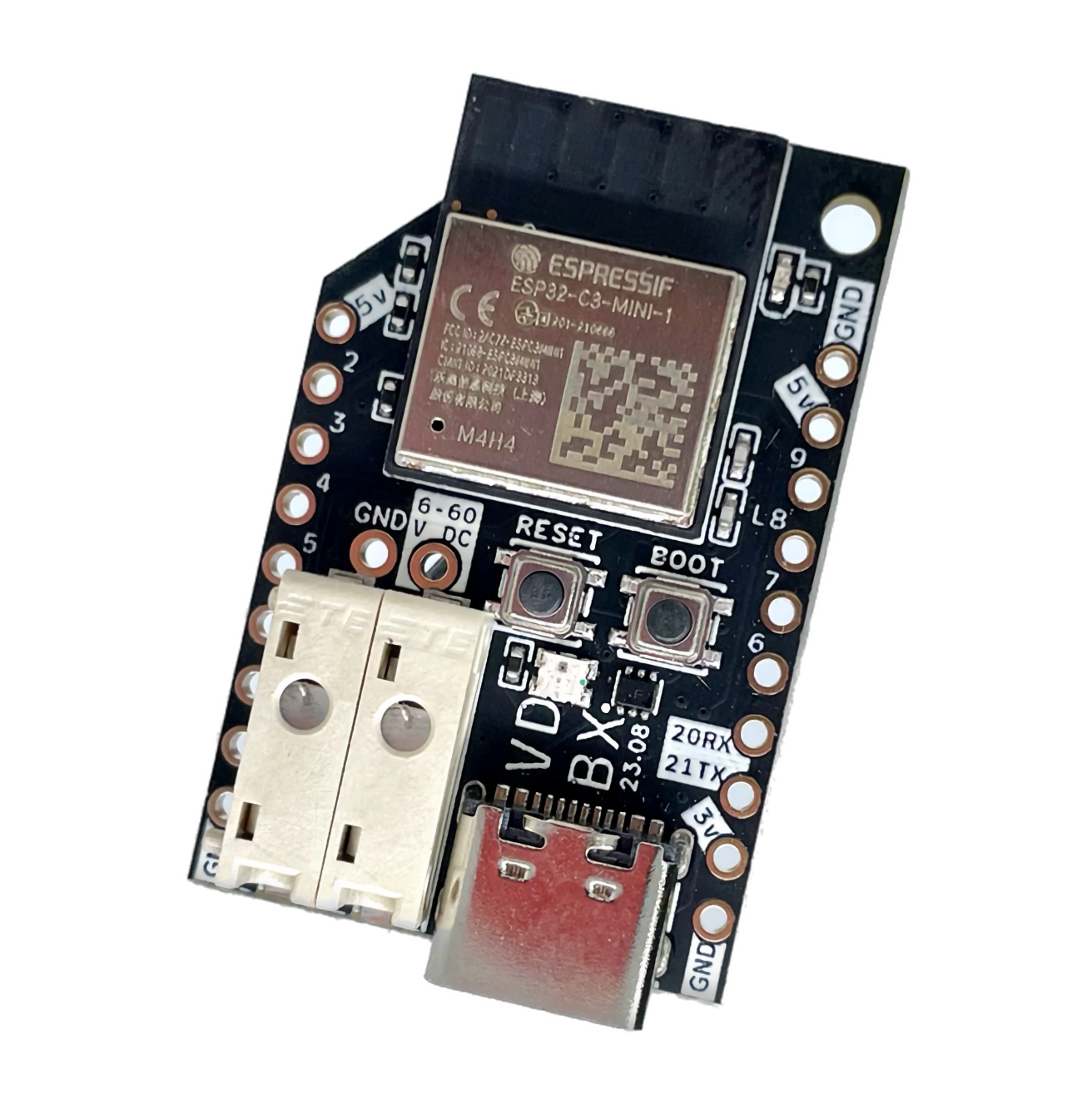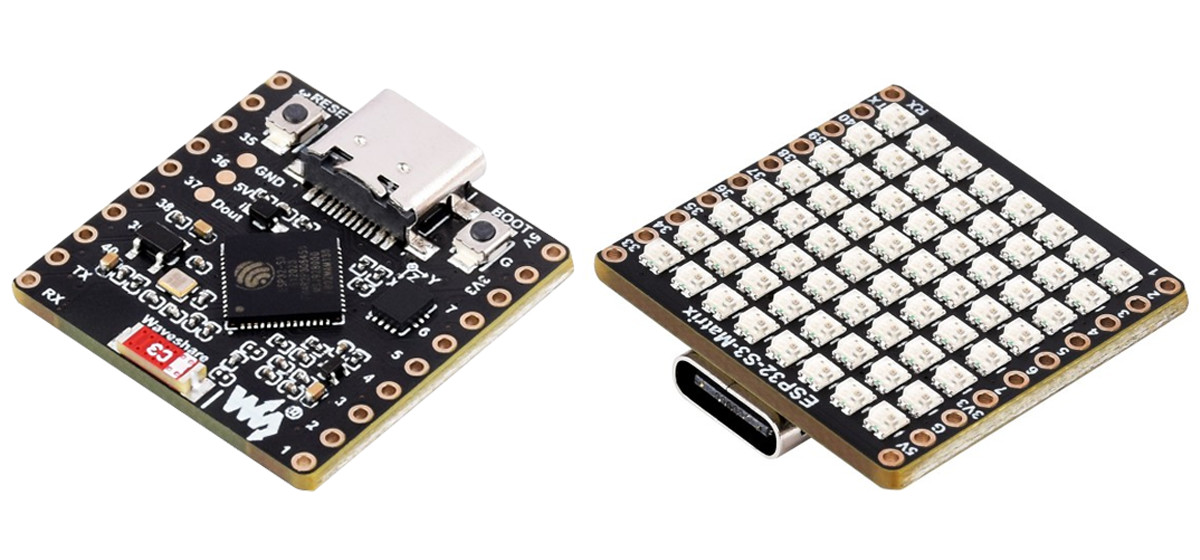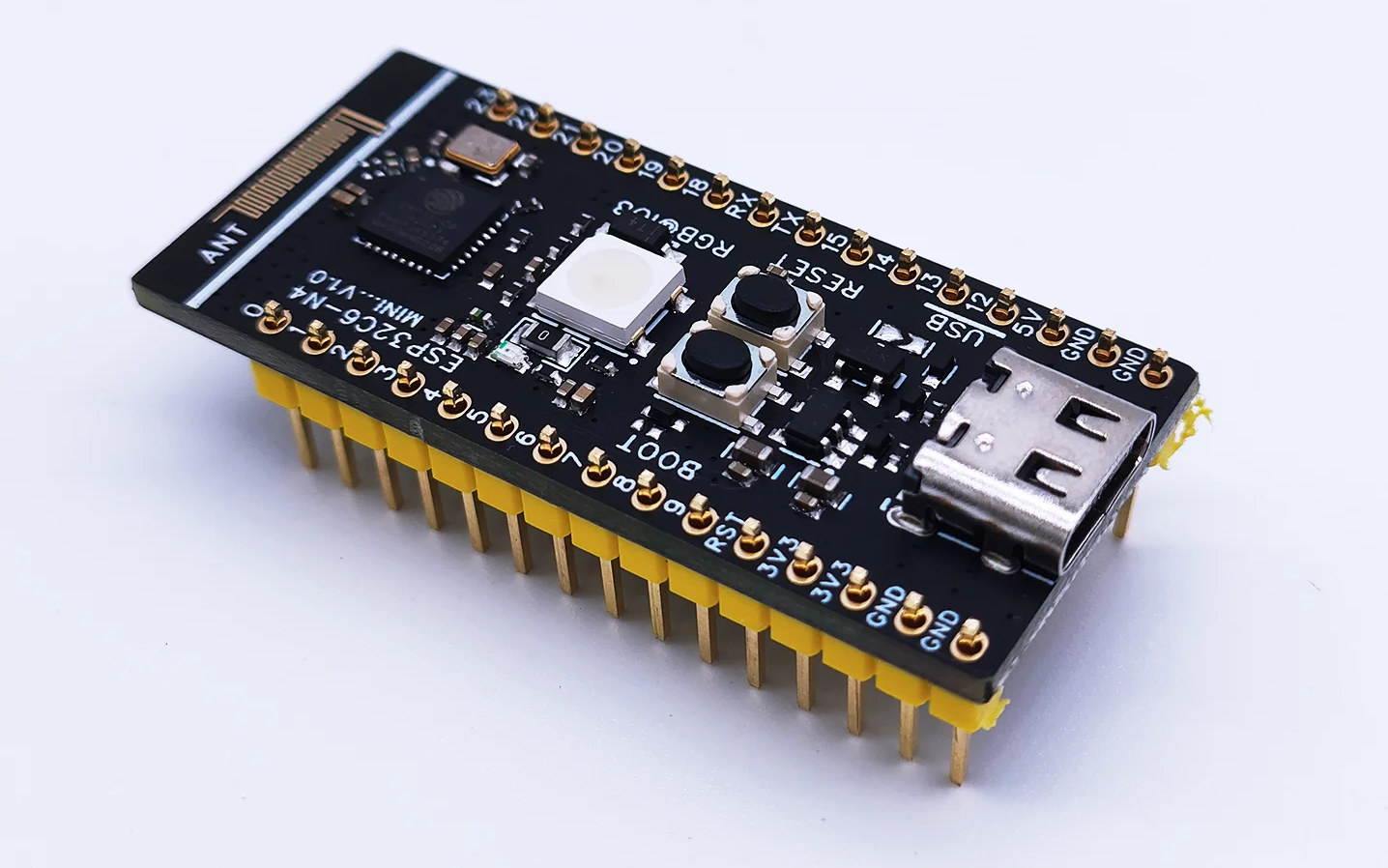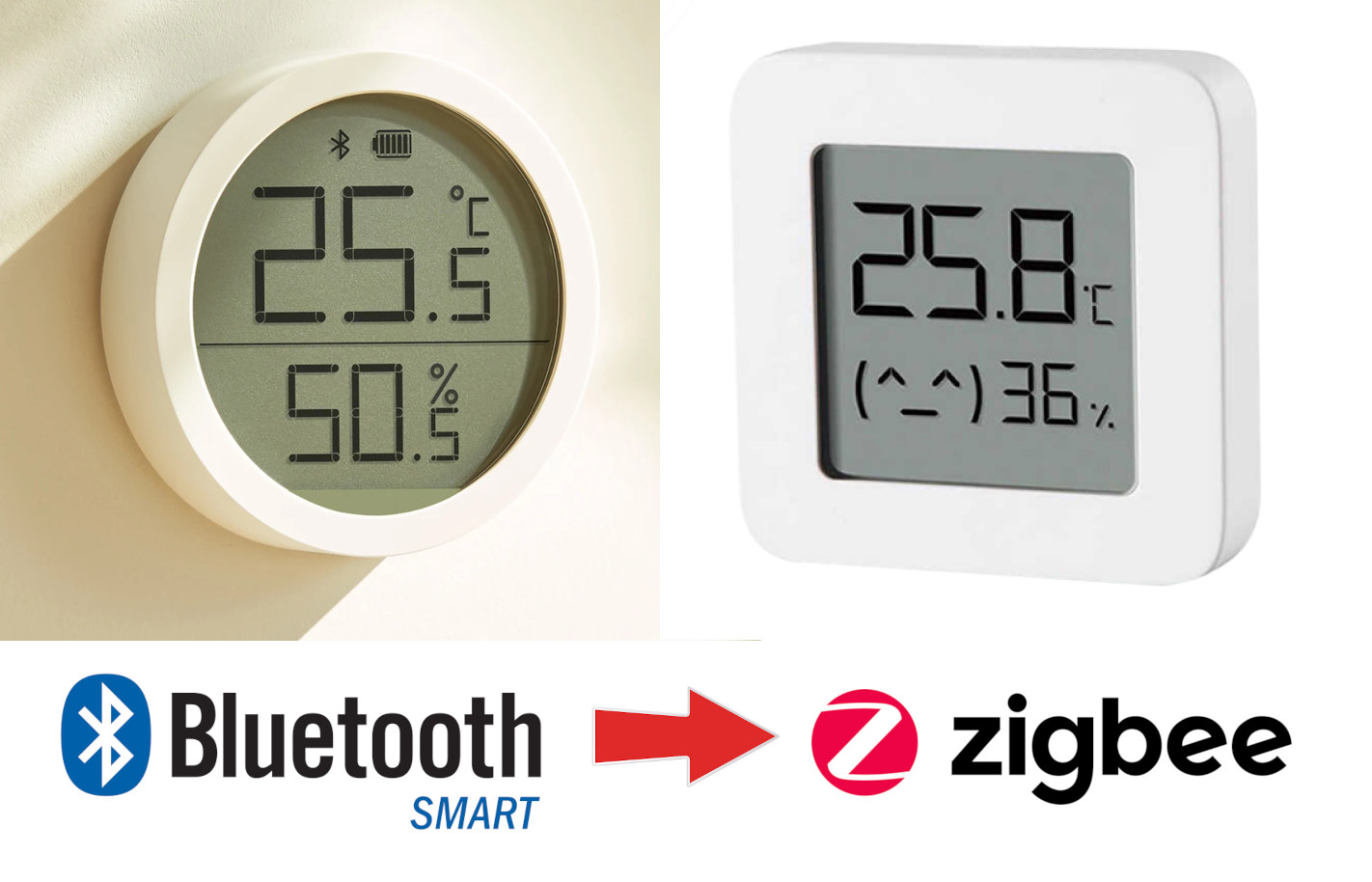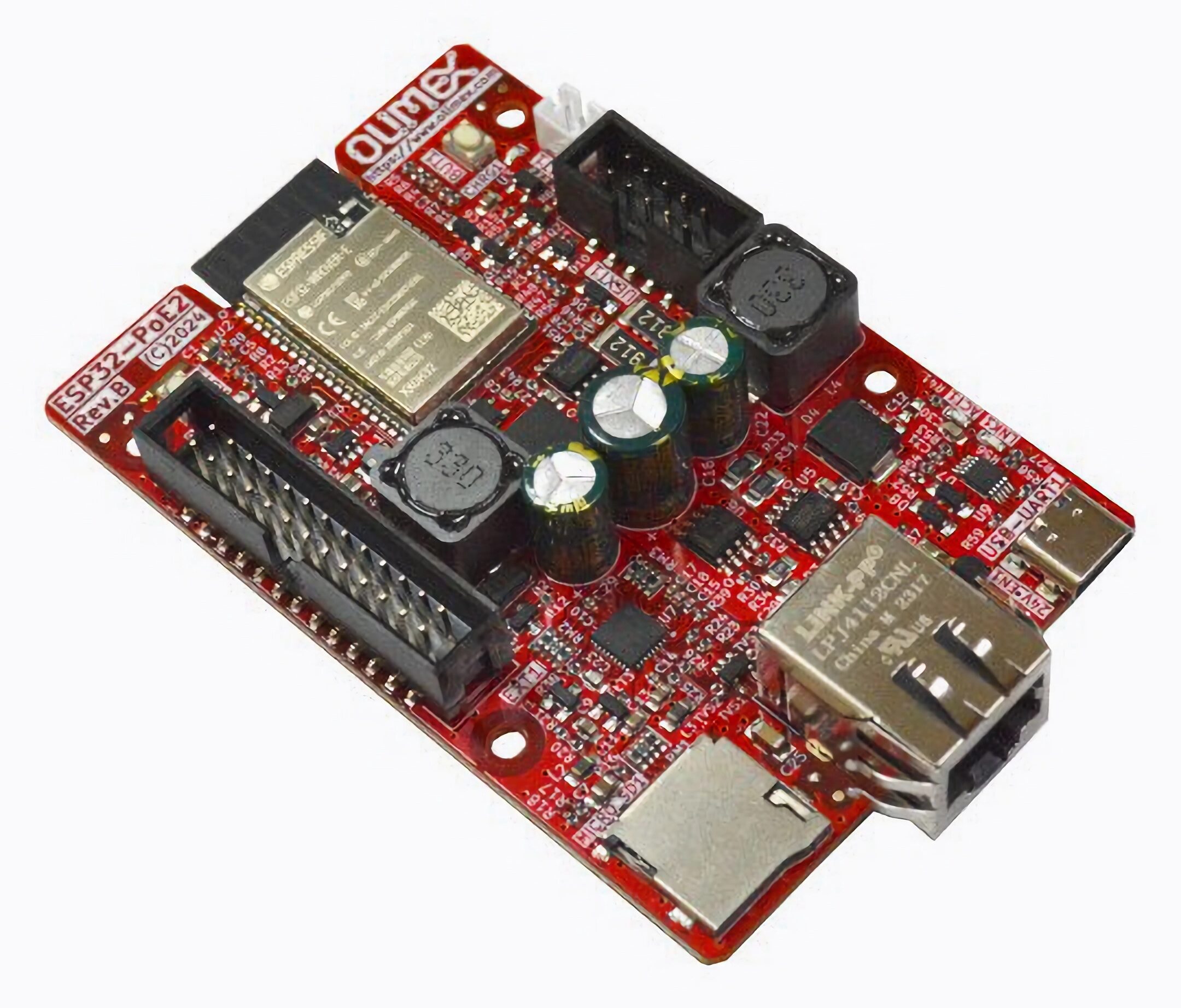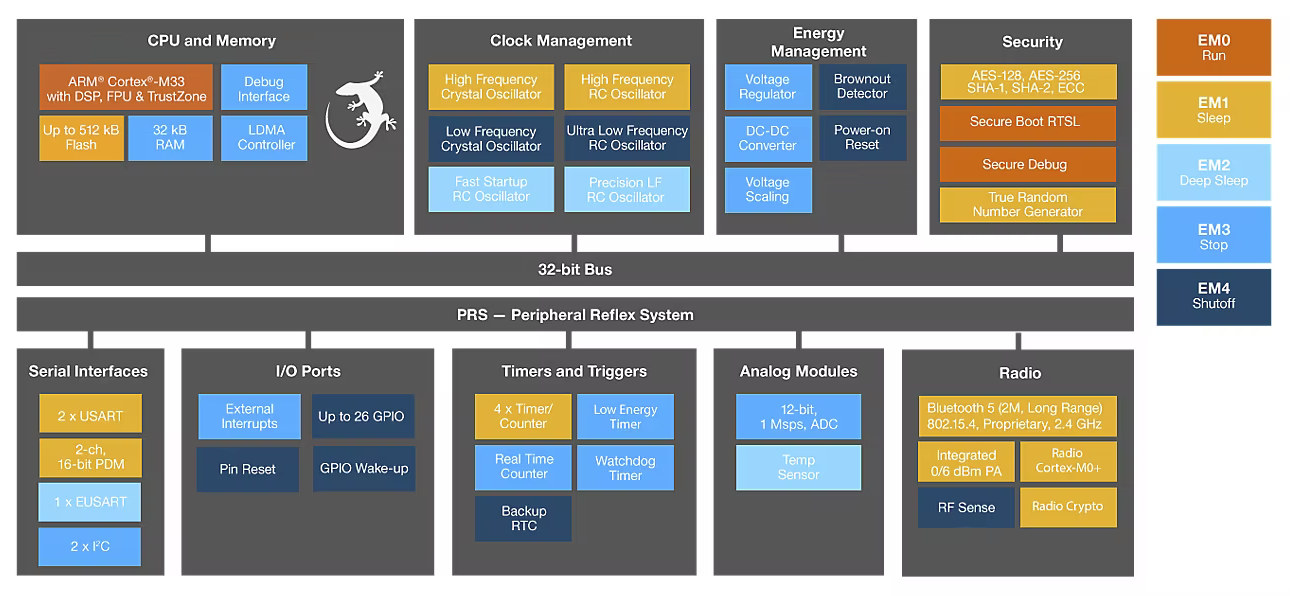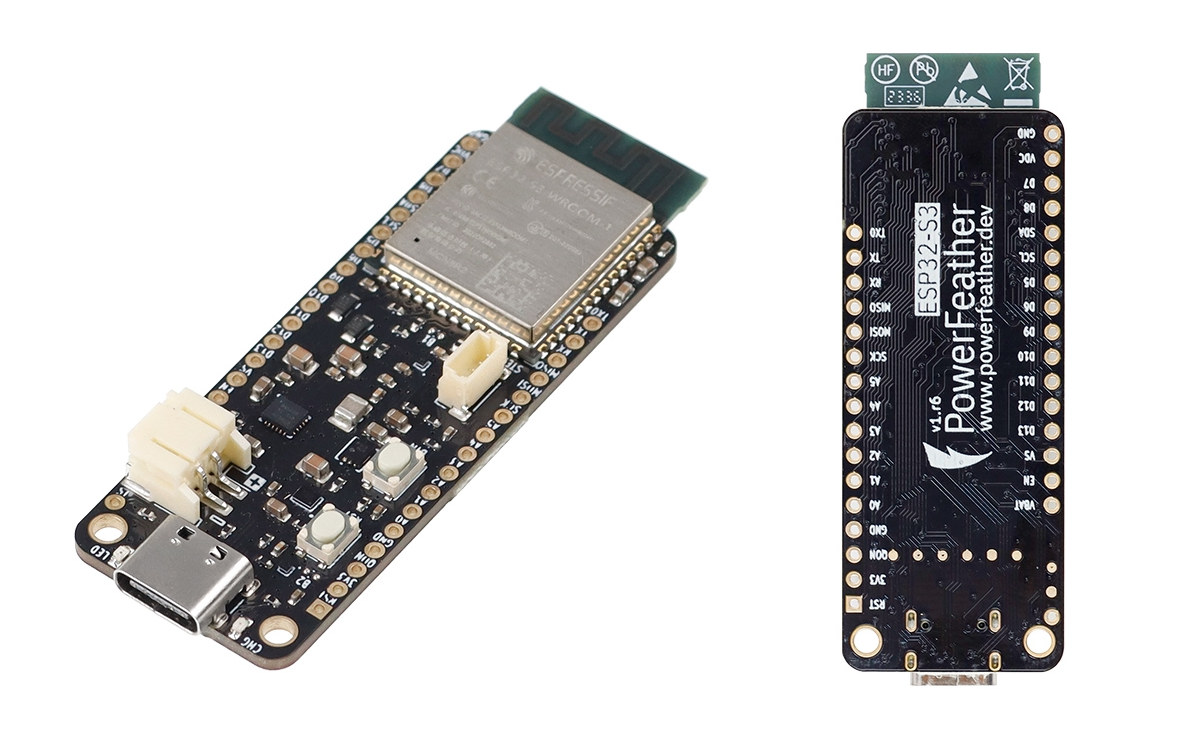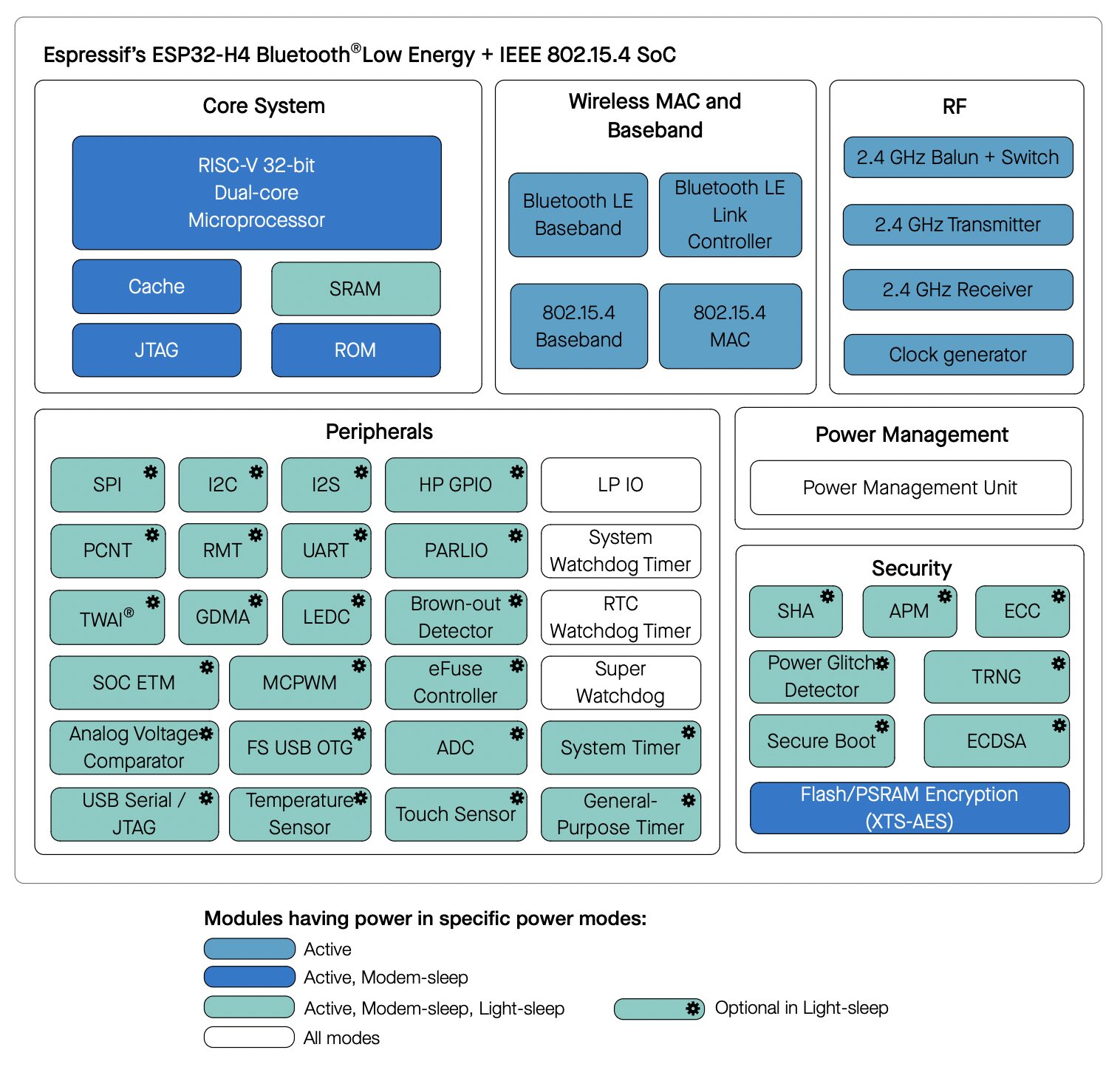Voidbox FLIP_C3 is an open-source hardware board powered by an ESP32-C3 WiFi & BLE microcontroller that takes up to 60V DC power input feeding a 5V/2A DC-DC step-down converter and flashed with ESPHome firmware by default for Home Assistant support. The board incorporates a push-in spring release connector which means stranded (ferrules or tinning are suggested) and solid wires can be used in deploying the device in off-grid/battery-powered systems with up to 16s LiFePO4 delivering 48V through the 6-60V input port on the ESP32-C3 board. The onboard WS2812B LED can be used as a null pixel/level shifter for longer strings of addressable pixels. The ESP32-C3 – due to its support for Wi-Fi and BLE connectivity – is a popular SoC for IoT solutions and powers home and industrial automation devices such as NanoCell v2.1, Spark Analyzer, LOLIN C3 Pico, and the LILYGO T-RSC3. It is built for home automation applications […]
ESP32-S3-Matrix board features 64 LEDs, GPIO pins, 9-axis “attitude” sensor for robotics and motion control applications
The Waveshare ESP32-S3-Matrix is a microcontroller development board designed for AIoT applications, featuring a larger 8×8 RGB LED matrix (64 LEDs) compared to the 5×5 RGB LED matrix (25 LEDs) on the ESP32-C3/ESP32 based “C3FH4 RGB” / “PICO D4 RGB” board. In addition to that the Waveshare board features two 10-headers for GPIOs, UART, and power signals, along with an integrated QMI8658C attitude sensor (9-axis IMU sensor), making it ideal for robotics and motion control projects. Recently we have seen Waveshare introduce affordable products that are perfect for embedded development like the $15 1.69-inch IPS touch LCD module, the $6.99 ESP32-C6-Pico Board, the $4.99 ESP32-S3-Tiny board and much more feel free to check those out if you are interested in those. Waveshare ESP32-S3-Matrix dev board specifications: MCU – Espressif Systems ESP32-S3FH4R2 CPU – Dual-core Tensilica LX7 @ up to 240 MHz with vector instructions for AI acceleration Memory – 512KB RAM, […]
WeAct ESP32-C6-Mini is the cheapest ESP32-C6 board so far going for less than $4
WeAct ESP32-C6-Mini is a small development board based on Espressif Systems ESP32-C6 WiFi 6, Bluetooth, and 802.15.4 wireless SoC that’s the cheapest we’ve seen so far selling for just $3.86 on Aliexpress. WeAct was one of the first companies to launch a third-party ESP32-C6 development board year with the price starting at just $6. I still remember the excitement around the first $5 ESP8266 WiFi 4 module when we first covered it in 2014, and ten years later, we can get a full $4 development board with a more powerful 160 MHz RISC-V microcontroller, WiFi 6, Bluetooth 5.0, and an 802.15.4 radio for Thread, Zigbee, and Matter. WeAct ESP32-C6-Mini specifications: Wireless SoC – ESP32-C6-N4 CPU Single-core 32-bit RISC-V clocked up to 160 MHz Low-power RISC-V core @ up to 20 MHz Memory – 512KB SRAM, 16KB low power SRAM Storage – 320KB ROM, and 4MB flash Wireless – 2.4 GHz […]
Enabling Zigbee in Bluetooth LE temperature and humidity monitors from Xiaomi and Qingping using Telink TLSR8258 WiSoC
Qingping CGDK2 and Xiaomi LYWSD03MMC Bluetooth LE (BLE) temperature and humidity monitors based on Telink TLSR8258 can be switched to Zigbee thanks to a custom firmware flashed over-the-air. Telink TLS8258 is a multi-protocol wireless microcontroller supporting Bluetooth LE 5, Bluetooth Mesh, Zigbee, RF4CE, Thread, 6LoWPAN, HomeKit, ANT, and 2.4GHz proprietary and found in boards such as the LILYGO T-Zigbee and various products. Some products only enable one wireless protocol, for example, Bluetooth LE as in the just-mentioned Qingping and Xiaomi monitors, but “SmartHomeScene” has found out that it was possible to switch from BLE to Zigbee on those by simply updating the firmware. The Telink TLS8258 devices mentioned above will publish data over BLE every 10 minutes (unless humidity or temperature changes, in which case data is transmitted immediately) with the default firmware, but Zigbee can be enabled by using the pvvx custom firmware for the following models: Xiaomi LYWSD03MMC […]
Olimex ESP32-POE2 board offers up to 25W for power-intensive applications
The Bulgarian hardware manufacturer, Olimex, has designed a new ESP32 board with Power over Ethernet (PoE) functionality. The Olimex ESP32-POE2 board builds on the original ESP32-POE and features the same ESP32-WROOM-32 microcontroller module with Wi-Fi and Bluetooth connectivity. However, it supports up to 25W power delivery from the Ethernet port via PoE and can be used in more demanding projects. The Olimex ESP32-POE2 board features a low-power design and consumes only 200µA in deep sleep mode. The board can be powered via USB-C, Ethernet, or Li-Po battery. The Ethernet interface is built on Texas Instruments’ TPS2378PW chip with IEEE 802.3at classification and legacy PoE support. Powering with PoE requires at least 37V DC for seamless operation. Two proprietary connectors (UEXT and EXT1) can be used to add sensors and other modules and expand the board’s operation for IoT projects. Users can select between 24V/0.75A or 12V/1.5A power output, with a […]
Silicon Labs BG22E, MG22E, FG22E wireless MCUs target energy harvesting, battery-free IoT devices
Silicon Labs xG22E is a family of wireless SoCs consisting of the BG22E, MG22E, and FG22E and designed to operate within an ultra-low power envelope required for battery-free, energy harvesting applications such as electronic shelf labels, Smart Home sensors, remote controls, and so on. Like the just-announced Silicon Labs MG26, BG26, and PG26, the new xG22E family features a Cortex-M33 core clocked up to 76.8MHz. As an evolution of the low-power BG22, the BG22E offers Bluetooth 5.4 LE connectivity with “Energy Conservation” to further enhance battery longevity and even support designs that eliminate the need for batteries. The MG22E is similar but embeds an 802.15.4 radio for Zigbee connectivity, and the FG22E provides a 2.4GHz proprietary plus the Cortex-M33 is clocked up to 38.4MHz. Silicon Labs BG22E, MG22E, FG22E specifications: MCU – Arm Cortex-M33 @ 76.8 MHz with DSP and FPU (38.4 MHz for FG22E) Memory – Up to 32 […]
ESP32-S3 PowerFeather board supports up to 18V DC for solar panel input
The ESP32-S3 PowerFeather board is an Adafruit Feather-shaped ESP32-S3 WiFi and BLE IoT board that can be powered by a Li-Ion or LiPo battery and supports up to 18V DC input for direct connection to a solar panel. The developer told CNX Software that the main differentiating factor from other ESP32-S3 development boards was “its extensive power management and monitoring features” with a wide DC input range, supply and battery monitoring, and battery protection features. ESP32-S3 PowerFeather specifications: ESP32-S3-WROOM-1-N8R2 MCU – ESP32-S3 dual-core Tensilica LX7 up to 240 MHz with 512KB SRAM, 16 KB RTC SRAM Memory – 2MB QSPI PSRAM Storage – 8MB QSPI flash Wireless – WiFi 4 and Bluetooth 5 LE + Mesh; PCB antenna USB – 1x USB-C 1.1 OTG port for power and programming Expansion 2x 16-pin 2.54 mm pitch headers with 23x multi-function GPIO: UART, I2C, SPI, I2S, SDIO, PWM, CAN, RMT, Camera, LCD […]
ESP32-H4 low-power dual-core RISC-V SoC supports 802.15.4 and Bluetooth 5.4 LE
Espressif Systems has formally announced the ESP32-H4 low-power dual-core 32-bit RISC-V wireless microcontroller with support for 802.15.4 and Bluetooth 5.4 LE portfolio after having unveiled it at CES 2024. It’s the first Espressif chip to support Bluetooth 5.4 LE with previous models such as ESP32-H2 or ESP32-C6 only supporting Bluetooth 5.0/5.2. Besides BLE 5.4 support, the new ESP32-H4 dual-core RISC-V WiSoC is an evolution of the ESP32-H2 single-core chip with PSRAM support (up to 4MB built-in), additional GPIOs (36 vs 24), touch sensing GPIOs, and some extra security features such as a power glitch detector also found in the recently announced ESP32-C61. ESP32-H4 specifications: CPU – Dual-core 32-bit RISC-V core (at up to 96 MHz) RAM – 320KB KB SRAM, optional PSRAM up to 4MB Storage – 128KB ROM, External flash support Wireless connectivity IEEE 802.15.4 radio with Zigbee and Thread support, Matter protocol Bluetooth 5.4 (LE) radio designed in-house, […]


